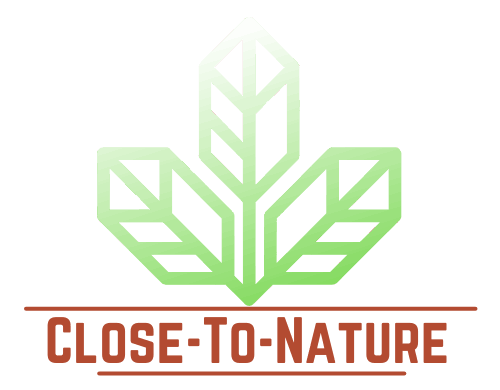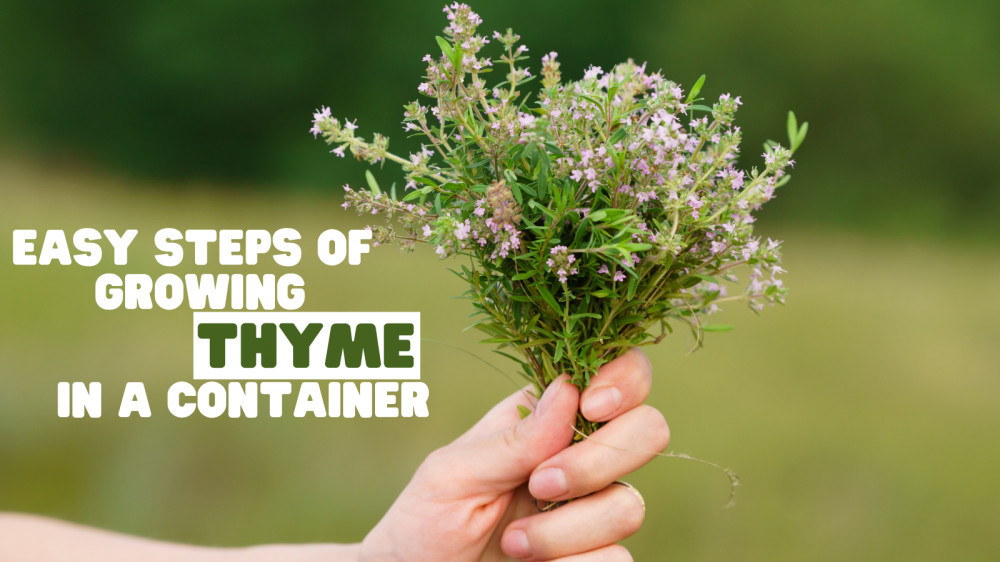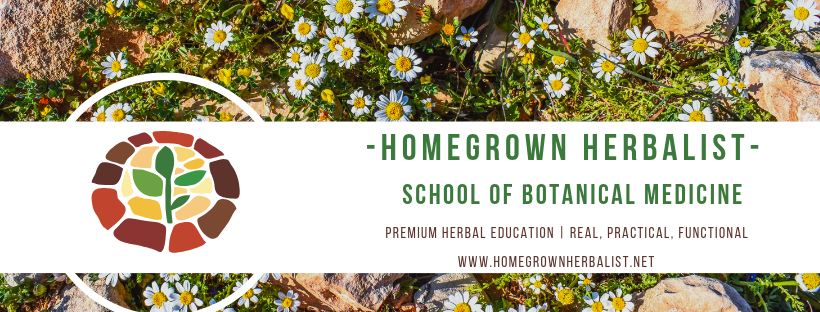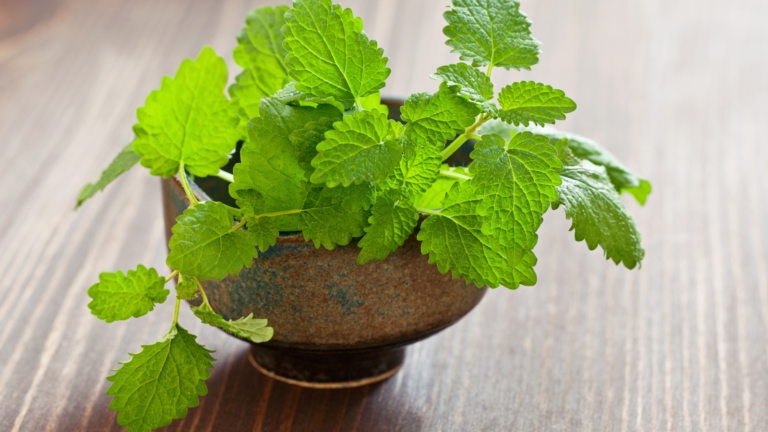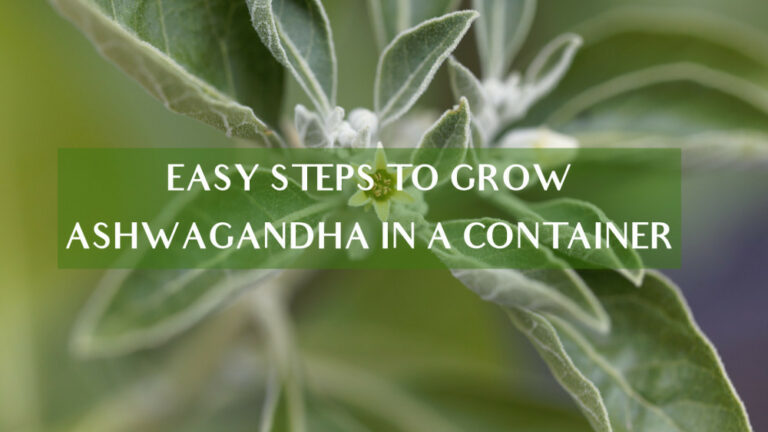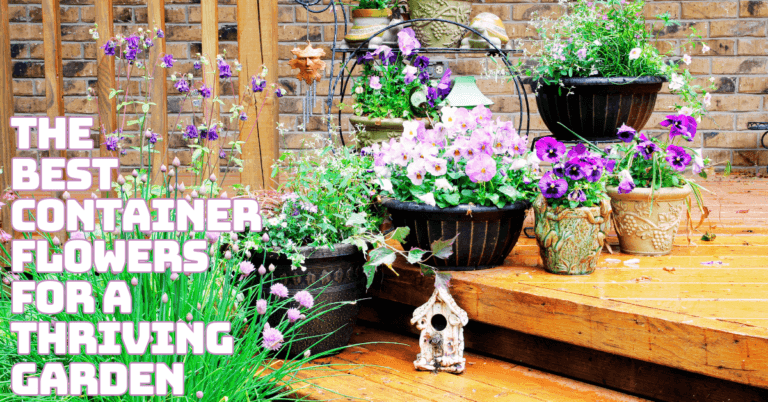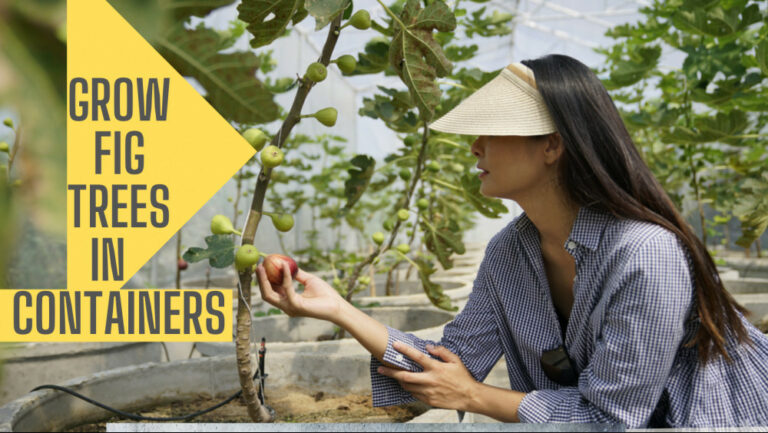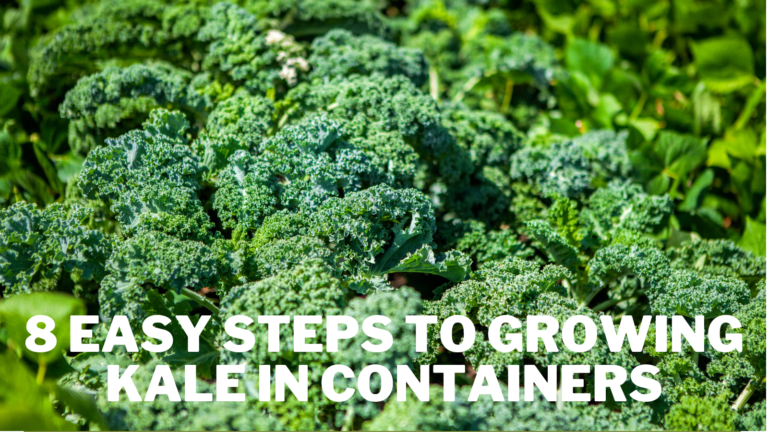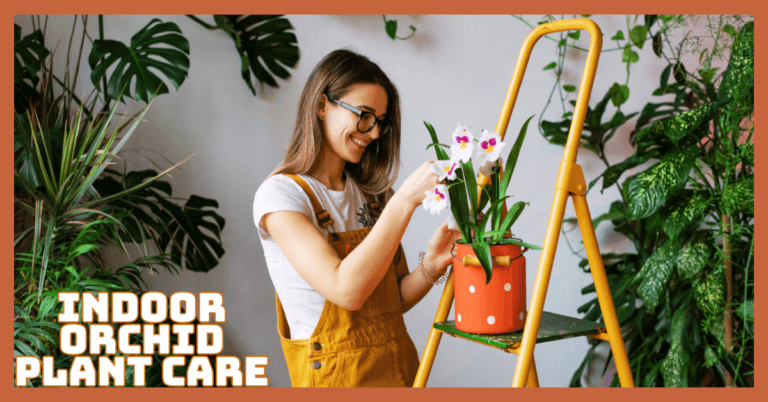Easy Steps Of Growing Thyme In A Container
Easy Steps Of Growing Thyme In A Container
Fresh herbs are a culinary delight for the home cook. What could be better than having the scents and flavours of the kitchen right at hand?
Thyme is a versatile herb with numerous applications. It gives any dish a delicate aroma and almost grassy spice.
Thyme cultivation requires plenty of sunlight and well-drained soil. Growing thyme in a container is one of the simplest indoor herb-growing methods.
Origin Of Thyme
Thyme (/tam/) is the herb (dry aerial parts) of several species of the Thymus, found in scented perennial evergreen plants in the mint family Lamiaceae.
Thymes are related to the oregano genus Origanum, both native to the Mediterranean region.
Thymes have culinary, medicinal, and ornamental benefits. Thymus vulgaris is the most widely cultivated and utilized for culinary purposes. Thyme comes from the Mediterranean region.
Thyme grows wild in the Levant, where it is thought to have originated. Ancient Egyptians used thyme to embalm them.
The ancient Greeks believed it to be a source of courage and used it in their baths and burned it as incense in their temples.
The Romans, who used thyme to purify their rooms and “add a fragrant flavour to cheese and liqueurs,” are credited with spreading the herb throughout Europe.
In the European Middle Ages, the herb was used to help people sleep and avoid nightmares.
During this time, women frequently gave thyme leaves to knights and soldiers as gifts, as the herb was thought to provide the wearer with courage.
Thyme was also burned as incense and placed on coffins during funerals to ensure a smooth transition to the next life.
Thyme thrives in a warm, sunny environment with well-drained soil. It's usually planted in the spring and becomes a perennial after that.
Seed, cuttings, and dividing rooted parts of the plant can all be used to propagate it. It's a drought-resistant plant.
The plant can withstand hard cold and grows wild in mountainous areas. Cuttings are used to propagate it on dry hillsides. To avoid becoming woody, it should be clipped after flowering.
Types Of Thyme
Thyme can be planted at any time of year. It is a member of the mint family Lamiaceae, which includes approximately 300 kinds.
Thyme has been treasured for centuries for its smell, flavour, and ornamental habit. There's a variety for almost every climate and area. Find out the best variety for growing thyme in a container.
1. Common Thyme (Thymus vulgaris)
As you might expect, common thyme is the most extensively used culinary thyme. It thrives in various climates, from zones 3 to 8.
It overwinters consistently in zone 4/5 and spreads quickly. When cultivated at the warmer end of its range, the leaves will have a stronger flavour and a paler, narrower appearance.
The flowers of common thyme are white or pale lilac and grow 8-12 inches tall. This kind is also known as garden or English thyme.
2. Caraway Thyme (Thymus herba-barona)
Caraway is a low-growing thyme with narrow green leaves and light pink blossoms that grow to about 6 inches tall.
This thyme type was historically used to flavour barons of beef, a substantial-top round roast. Caraway thyme grows well in zones 4 through 8.
3. French Thyme (Thymus vulgaris)
French thyme is similar to ordinary thyme. However, it is less hardy and should be grown as an annual plant north of Zone 6.
Its flavour is also said to be gentler and sweeter. Chefs prefer it because it grows up to twelve inches tall and has a more compact growth pattern than regular thyme.
4. Golden Lemon Thyme (Thymus citriodorus)
It is similar to lemon thyme in most aspects, although it has a golden leaf, as the name suggests.
This cultivar is ideal for cooking as well as aesthetic purposes. It's hardy as far north as Zone 4a, according to reports.
5. German Thyme (Thymus vulgaris)
German thyme is a hardier version of ordinary thyme. It is frequently called winter thyme because of its frost tolerance.
It has thinner stems and smaller evergreen leaves. The German thyme has a strong flavour and is one of the most popular culinary herbs.
6. Orange Balsam Thyme (Thymus vulgaris)
Orange thyme, as you might expect, has orange-scented leaves. It has tiny gray-green leaves and delicate pink flowers and grows between 4 and 12 inches tall.
According to the Missouri Botanical Garden, the flavour is considerably better fresh than dry. It thrives in zones 5-8.
7. Silver Queen Thyme (Thymus pulegioides)
Another lemon thyme is Silver Queen, which is fantastic in tea and cooking. It features silver-edged leaves, as you might expect. Silver Queen thyme grows 3-12 inches tall. It has pale lilac flowers and thrives in zones 5-8.
8. Summer Thyme
French thyme is another name for summer thyme. It has a narrower leaf than the English variety and is less hardy, so it grows as an annual plant in northern regions.
9. Creeping Thyme (Thymus serpyllum)
Creeping Thyme is a flat, ground-hugging plant rarely growing over 3 inches. It has bluish-green leaves that are hairy and rich pink blooms.
It is commonly used in walkways and lawns to withstand heavy foot traffic. It thrives from zone 8 in the south to zone 4 or 5 in the north.
10. Woolly Thyme (Thymus pseudolanuginosus)
Wooly thyme bears delicate pink blooms and tiny grayish leaves. Woolly leaves and stems, as the name implies. It's a flat creeping cultivar that rarely grows taller than 3 inches.
Steps Of Growing Thyme In A Container
Fresh herbs are a culinary joy for the home cook. What could be better than having the kitchen's aroma and smells at your fingertips? Thyme (Thymus vulgaris) is a versatile herb with numerous applications.
It gives every food a subtle scent and a green spice. Thyme requires plenty of sunlight and well-drained soil to thrive indoors. Thyme is one of the most straightforward herbs to grow indoors.
1. Choose A Container For Growing Thyme
The minimum pot size for container-grown thyme is 4 inches tall by 4 to 6 inches broad. However, bigger is better for larger plants such as lemongrass, rosemary, or sage.
The pot height for large specimens should be closer to one-half of the mature height – or perhaps higher.
Dwarf kinds and shallow-rooted herbs like thyme and globe basil thrive in 6-inch containers.
Small pots require more regular watering, and it's critical to maintain consistent soil moisture levels, as fluctuating water levels might lead to a sickly plant.
For single herb plantings, pots as small as 10 inches in diameter and greater can be used; for large specimens, multiple herbs in one pot, or multiple herbs in one pot, a minimum of 18 inches in diameter is required.
Thyme doesn't require much space to develop so young plants can be grown in containers as small as 4 inches in diameter.
This plant might do best in clay or terracotta pots. Ascertain that the container has enough drainage.
Because clay pots are porous and dry out rapidly, they are ideal for growing Mediterranean herbs like thyme.
2. Location To Place The Potted Thyme Plant
Thyme grows well in well-drained, low-nutrient soil. Planting it in direct sunlight allows the essential oils to reach the surface of the leaves, giving them a rich flavour.
Thyme is a drought-tolerant plant that needs protection from chilly winds and wet winters. In the spring or autumn, plant it in well-drained soil or gravel.
It thrives in gravel gardens, pavement cracks, and walkways' edges. If growing in a container, use soil-based compost with plenty of grit, and keep it up off the ground to aid drainage.
3. Planting Thyme
It is possible to cultivate thyme from seed. However, seedlings can be difficult to establish. Young thyme plants, widely available in garden centres and nurseries, are preferable.
Watering thyme that has been planted in free-draining soil or compost. You won't need to water your thyme plants once they've established themselves.
Thyme grows in almost drought conditions with little soil minerals. Thus, it won't grow well in a mixed container with other herbs.
Thyme thrives in direct sunlight. Begin with young seedlings planted after the final frost in the spring.
Choose healthy young thyme plants from Bonnie Plants, a firm assisting home gardeners for over a century.
4. Soil Requirements For Thyme Plants
Plant thyme in well-draining soil with a pH of around 7.0. Mulching with limestone gravel or builder's sand improves drainage and helps avoid root rot.
Add a few inches of Miracle-Gro Performance Organics All-Purpose In-Soil Conditioner to improve soil texture and nutrition. Incorporate the ground soil into the top layer of the existing soil.
Fill pots with Miracle-Gro Performance Organics All-Purpose Container Mix for growing thyme in containers.
Both are rich in old compost and provide an ideal habitat for vigorous root development. The easy-going herb likes sandy or loamy soil over moist soil. It can even grow in rocky gravel.
Thyme spreads quickly, so keep your plants at least 12-24 inches apart when adding them to your garden.
Use ordinary, well-draining, sandy or loamy soil when growing thyme plants. Thyme and thyme plants aren't fussy about soil as long as there's enough drainage in the planting area.
Thyme soil can range from 5.0 to 8.0 on the pH scale, with 7.0 ideal. A mixture of sand, potting soil, peat moss, and perlite will provide sufficient nutrients and drainage. Thyme tolerates indirect light, making it ideal for the kitchen herb garden.
5. Sunlight Requirements Of Thyme
Thyme requires a lot of light to thrive, about 5-6 hours daily. If you're growing it indoors, a south-facing window is a fantastic location!
Place the pot in a spot that gets plenty of sunlight. Thyme thrives in direct sunlight and enjoys the heat.
If growing in a pot indoors, plant near a sunny window. The soil must drain well to avoid “wet feet.” Plant thyme with other drought-tolerant perennials in the garden.
Thyme thrives in direct sunlight. Begin with young seedlings planted after the final frost in the spring.
Choose healthy young thyme plants from Bonnie Plants®, a firm assisting home gardeners for over a century, and plant them in well-drained soil.
Plant in well-draining soil with a pH of around 7.0. Well-established thyme thrives in full to partial sun.
Plants require at least six hours of partial sun per day. The full sun helps avoid root rot by reducing excess moisture in the soil.
Thyme, native to the Mediterranean, grows best in well-drained, low-nutrient soil. Its wonder is excellent or comes from planting it in full sun, which draws the essential oils to the surface of the leaves. Thyme is a drought-tolerant plant that requires protection from chilly winds and wet winters.
6. Watering Thyme
If you aren't using a fabric grow bag, ensure your container has adequate drainage to prevent the thyme from becoming wet.
As previously said, thyme is a hardy Mediterranean herb that thrives in the sun and is generally dry.
Allow the soil to dry completely between watering before soaking it. However, watch it throughout the summer when the weather is extremely hot and dry. It may require additional water if it looks wilted or the colour begins to fade.
When the soil is dry, water the plants deeply. When the plant is young, you'll have to be a little more careful with the moisture in the soil, making sure it doesn't dry out totally.
Once the plant has established itself and reached a height of 4-6 inches, water it only when the topsoil seems dry.
Overwatering will cause the leaves to wilt. Once established, thyme plants are drought-resistant, preferring to be under-watered rather than over-watered.
Wait until the earth is fully dry before saturating your thyme plant, then let it dry completely before watering it again.
Remember that thyme mayflower, but unlike other herbs, this does not indicate overwatering or “bolting”—it will flourish after blooming as long as you cut it back to encourage new growth.
7. Temperature And Humidity For Thyme Plants
Thyme grows best in a hot, arid area similar to its Mediterranean origins. Maintain temperatures in your home between 60°F and 80°F as much as possible, keeping humidity to a minimum. (This includes keeping your plant out of humid environments like kitchens and bathrooms.)
8. Fertilizer
How about this for simplicity: Thyme enjoys low-nutrient soil, so it doesn't need to be fertilized frequently.
This also indicates that the herb should be grown alone in a pot or container, as mixing it with other plants will make the soil too rich to survive.
If you want to boost your thyme, feed it early in the growing season with a diluted liquid fertilizer—choose an organic fertilizer if you plan to cook with or eat your herb.
Pay special attention to the fertilizer container you've chosen to ensure you're adding just enough to benefit, not harm, your thyme plants.
Thyme plants do not require much water. A slow-release, balanced fertilizer or old manure will suffice at the start of the growing season.
Depending on the growth, you can feed it half-strength, balanced liquid fertilizers like 10-10-10 every 6-8 weeks.
It's important to remember that fertilizing thyme isn't required. If you feed it too much, it will produce fewer essential oils and lose its distinctive flavour.
9. Pruning Your Thyme Plants
Once your thyme plant is established and around 4-6″ tall, clip or pinch stems and pluck a few leaves.
Trim periodically to encourage growth throughout the growing season. Trim no more than 13 percent of the plant (or pluck no more than 13 percent of the leaves).
Always use clean, sharp gardening shears or kitchen scissors to avoid damaging the stems and inviting diseases and bugs.
Like outdoor plants, indoor thyme plants can be harvested once grown. When you need the herb for cooking, remove the stems.
Potted plants can become woody after three or four years, so you should remove, separate, and transplant the smaller portions in individual pots. German thyme is perennial in zones 5 to 9, while lemon is perennial in zones 7 to 9.
Thyme is a low-maintenance plant that only requires light pruning after the first year. This should be done after the last spring frost to avoid the plants becoming woody and brittle.
Plants stay bushy by pinching the tops of the stems, but pruning ceases about a month before the season's first frost to ensure that new growth is not too fragile when the weather cools.
Trim thyme by a third in the spring, always cutting above points where fresh growth can be seen, never below the leafless woody stem.
Lemon thyme grows taller and stronger than the other herbs. Once the earth freezes, cover it with pine boughs to guard against winter damage in northern and cold climes.
Thyme is normally an annual in zone 10, succumbing to heat and humidity in the middle of the summer.
10. Pests & Diseases Of Thyme Plants
Spider mites might be an issue in dry weather. In humid areas, root rot and fungus illnesses should also be avoided.
As indicated above, the disease can be avoided with proper drainage, air movement, and planting.
Thyme plants are disease-resistant but susceptible to bacteria, fungi, and viruses like any other plant.
Root rot (Rhizoctonia), grey mould (Botrytis cinerea), and Alternaria blight are the most common diseases that harm thyme (Alternaria brassicicola).
Plant diseases can be transmitted through soil, water, air, infected tools, animals, and gardeners.
Early detection of infections on your thyme plants allows you to treat them before they are ultimately killed and successfully control symptoms.
Make your natural disease and pest control spray with harmless components. In a gallon of water, combine one tablespoon baking soda, ½ teaspoon mild dish detergent, and 2½ tablespoons olive oil to prepare a solution that repels bugs and acts as a fungicide for blight and mildew on thyme plant leaves.
Before spraying, shake it well in your bottle and repeat weekly to keep it effective. We believe harmful products should not be used in the garden since they can harm plants, soil, the environment, and you.
Infected plants should be discarded or burned. Keep sick plants out of your garden over the winter, and don't put them in your compost pile.
Even dead, diseased plants can transfer the disease to neighbouring plants or your soil.
12. Harvesting Thyme
Growing thyme indoors can provide a steady supply of fresh flavour. When your thyme plant develops many leaves, you can start using it.
Remove the stems and rinse them thoroughly. Pick off the leaves or push them off with your thumb and index finger down the length of the stem.
Leaves can be chopped or added whole to sauces, soups, and other recipes. The stems can be cooked in stock to release their taste, but make sure to drain them out.
Thyme leaves can also be dried on a baking sheet and left in a warm, dry place for a day or two.
For the best flavour, harvest thyme shortly before it flowers in the summer. After the dew has dried, clip it in the morning. The best thing is that the plant will grow back the more you harvest it!
Take no more than 25-35 percent of the entire plant. Also, the leaves should not be stored because they are best eaten fresh.
Thyme is an evergreen perennial. You may pluck fresh leaves all year. However, it is best harvested in early summer, before flowering, when the plant is most productive.
In evergreen areas, harvest leaves as needed, even during the winter. Although the flavour is strongest just before the plant's bloom, thyme is so fragrant that the leaves have a pleasant perfume all year. Before using, remove the tiny leaves from the woody stalks.
Conclusion
Grow thyme, basil, and oregano in a pot on your deck for your pizza garden. The tiny leaves have a wonderful aroma and pair well with other herbs on the deck and in the kitchen.
If you need help growing thyme in a container, ask me anytime here, and I will try to find the solution.
I trust you enjoyed this article on the Easy Steps Of Growing Thyme In A Container. Please stay tuned for more blog posts soon. Take care!
JeannetteZ
>>>Please click here to read my all-inclusive article about Container Gardening<<<
>>>Are you interested in homegrown herbs and medicine? Please click here to find out more about it!<<<
Your Opinion Is Important To Me
Do you have thoughts, ideas, or questions? I would love to hear from you. Please leave me your questions, experiences, and remarks about this article on the Easy Steps Of Growing Thyme In A Container in the comments section below. You can also reach me by email at Jeannette@Close-To-Nature.org.
Disclosure
This post may contain affiliate links. I earn from qualifying purchases as an Amazon Associate and other affiliate programs. Please read my full affiliate disclosure.
You might also enjoy these blog posts:
Easy Steps Of Growing Chives In A Container
Most Important Steps Of Growing Oregano In A Container
Easy Steps Of Growing Basil In A Container
Perfect Tips Of Growing Rosemary In A Container
Best Tips For Growing Rhubarb In Containers
